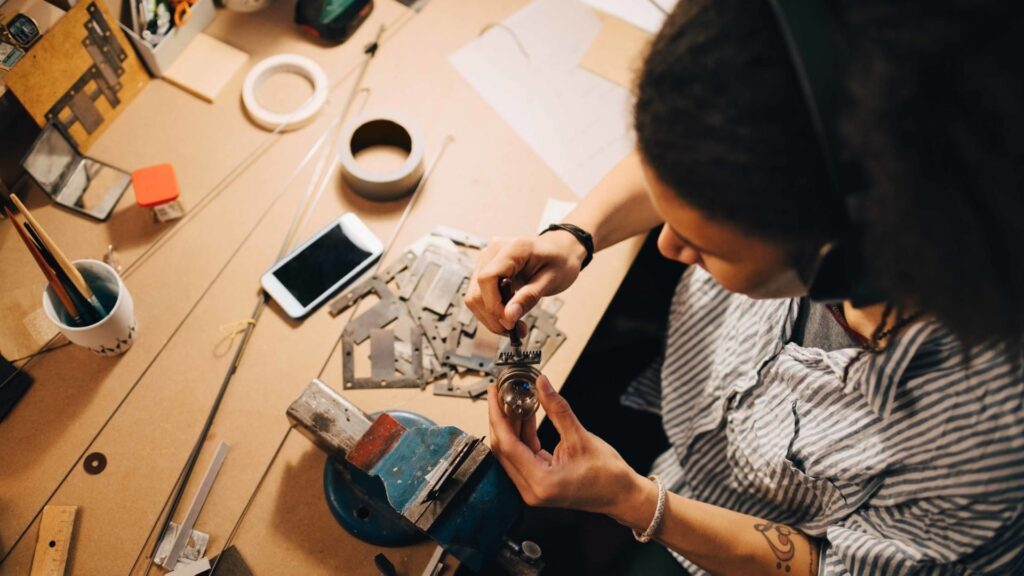There’s a lot of information on the internet about whether or not you can have your invention patented. While this information is critical, it does not indicate whether your concept will be patented. Many influential organizations may have systems in place to patent any new concept that comes along, but for businesses just getting started or scaling up, determining whether or not to protect ideas with patents can be challenging, and it might be tempting not to do so in order to save money.
Here are some elements to consider when deciding whether or not your idea is worth patenting.
1. The Innovation Must Be Unique

Three criteria need to be met to get a USPTO Patent: New, usable, and unique. An inventor’s idea must be completely new for it to be eligible for a patent. It means that the patented technique, machine, composition of matter, or production must be the first of its kind and cannot be based on an idea that has already been patented, published, or sold.
As a result, looking for patents is an essential aspect of a patent agent’s job. The patent agent must thoroughly search existing literature, with some assistance and instruction from the inventor, to decide whether the inventor’s idea is unique enough to be patented.
2. Your Invention Must Be Useful
Yes, a patentable invention must have a helpful result or technique to achieve a result, which may come as a shock. It may be the simplest of the three patent qualities, as most inventors just want to make something that benefits consumers, workers, and the entire public.
Natural phenomena, pure biological discoveries, and abstract ideas, on the other hand, cannot be patented. You must also include a practical, executable method or use in the invention. The patent agent’s literature search for determining the invention’s uniqueness may also help locate supporting information to show why the new invention may be effective or solve an issue that prior inventions have raised.
3. Your Invention Must Not Be Obvious

Because it is unclear and subjective, this may be the most challenging of the three patent criteria. This trait is described by the phrase PHOSITA, which stands for “Person Having Ordinary Skill In The Art.”
Suppose a PHOSITA in the relevant field can indicate that the invention in question is an obvious step up or adjustment to what is already known and available in the domain. In that case, it will be deemed obvious and will not be given a patent. The idea is that the invention should be considered patentable as long as it can be demonstrated to have a legitimately unique outcome.
4. Your Invention Must Be Worth The Cost Of Patent
If you’ve determined that your idea is patentable (or at the very least not unpatentable), the next question is whether it’s worth spending the money and time to file a patent application. A design patent application will almost certainly be approved for less money and in less time than a utility patent, but it will provide less protection.
A utility patent can be costly and time-consuming to pursue. What are your alternatives if you don’t file a patent application? How might the competitive landscape shift if you have a patent-pending or if you don’t have one? You can file a provisional application to buy some time until the board approves it.
5. You Must Have A Prototype

Even if you have precise instructions for making a prototype, it’s still a good idea to make one before filing a patent application. It is because you will definitely run into problems that need to be fixed or refined to develop a usable prototype.
The refinement process aids in the identification of the gap between existing products and yours and helps you apply. It is usually in this gap that an invention worthy of a patent is discovered. The most patentable features of an invention are frequently the enhancements to an initial concept.
6. Do A Patent Search
A patentability search will help you determine whether your invention is patentable and whether filing a patent application is a good idea. A patentability search essentially looks out for any ideas or patents disclosed by other inventors that would make your invention unpatentable.
By searching keywords similar to your idea on Google Patents or the USPTO website, you may save money and do your own patentability search. You should also look through scientific journals to determine if your invention has already been discovered in the academic world, as this could make it unpatentable.
Using Google Scholar and other academic databases, you can look for scientific articles. You can still have a patentable idea if you come across a scientific publication or a patent similar to your creation. If your invention has all of the features already disclosed in the references you located, it is unlikely to be patentable.
7. Your Invention Must Be Your Own

A patent can only be filed in the name of the invention’s actual inventor or co-inventor. To be regarded as the inventor, it is not enough to make a financial contribution to a product. It is true even if the invention was created by someone or a company other than the creator.
The employer will usually own the patent, but it will be issued in the name of the actual inventor. You don’t necessarily own the patent just because you invented the underlying invention. It is especially true if the invention was conceived as part of the inventor’s job or if the inventor’s employment contract contains a pre-assigned clause.
If your invention meets all these criteria, visit Invent Help to understand the patent process better and get the help you need to file it. Also, you can check out on kulturehub how Invent Help helps inventors through a step-by-step process.
Conclusion
You will save time, money, and frustration during the patent process if you devote time to these seven critical areas. Before releasing your innovation to anybody else, you may need to file a provisional patent application to safeguard it. Your ideas may be similar to those of others; therefore, you’ll want to start the patent filing process with a patent search, which you can do with the help of an experienced patent professional.








